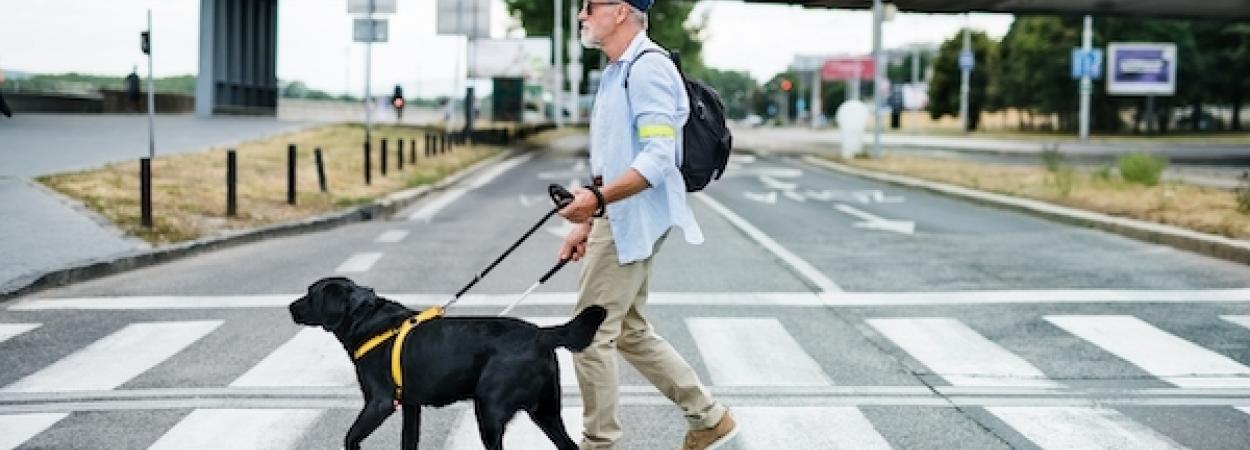Researchers Amy Parker, Martin Swobodzinski, Julie Wright, Kyrsten Hansen and Becky Morton of Portland State University, along with Elizabeth Schaller of American Printing House for the Blind, have published a literature review in Frontiers in Education: Wayfinding Tools for People With Visual Impairments in Real-World Settings: A Literature Review of Recent Studies.
The literature review, published in October 2021, and a case study published in September 2021 in the same journal are both related to an ongoing project led by Swobodzinski. The project, Seamless Wayfinding by Individuals with Functional Disability in Indoor and Outdoor Spaces: An Investigation into Lived Experiences, Data Needs, and Technology Requirements, is funded by the National Institute for Transportation and Communities (NITC).
The October article reviews 35 peer reviewed articles in order to identify and describe the types of wayfinding devices that people who are blind, visually impaired or deafblind use while navigating indoors and/or outdoors in dynamic travel contexts.
Within this investigation, the researchers discovered some characteristics of participants with visual impairments, routes traveled, and real-world environments that have been included in recent wayfinding research as well as information regarding the institutions, agencies, and funding sources that enable these investigations.
Results showed that 33 out of the 35 studies which met inclusionary criteria integrated the use of smart device technology. Many of these devices were supplemented by bluetooth low-energy beacons, and other sensors with more recent studies integrating LIDAR scanning. Identified studies included scant information about participant’s visual acuities or etiologies with a few exceptions, which limits the usability of the findings for this highly heterogeneous population. Themes derived from this study are categorized around the individual traveler’s needs; the wayfinding technologies identified and their perceived efficacy; the contexts and routes for wayfinding tasks; and the institutional support offered for sustaining wayfinding research.
Human wayfinding and navigation allow human beings to fully participate in the environment and are essential elements for leading healthy, economically sustainable, and full lives. The NITC project aims to drive forward the development of standards and innovation in mobile wayfinding as it relates to the integration of indoor and outdoor wayfinding and routing of visually-impaired, blind, and deafblind pedestrian travelers.
Photo by Halfpoint/iStock
The National Institute for Transportation and Communities (NITC) is one of seven U.S. Department of Transportation national university transportation centers. NITC is a program of the Transportation Research and Education Center (TREC) at Portland State University. This PSU-led research partnership also includes the Oregon Institute of Technology, University of Arizona, University of Oregon, University of Texas at Arlington and University of Utah. We pursue our theme — improving mobility of people and goods to build strong communities — through research, education and technology transfer.




